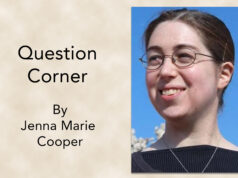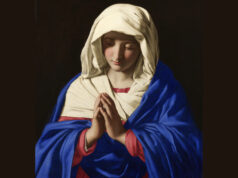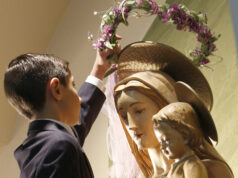Sunday Scripture readings, April 9, 2023, The Mass of Easter Day
Acts 10:34a, 37-43 Ps 118:1-2, 16-17, 22-23 Col 3:1-4 1 Cor 5:6b-8 (Alternative) Jn 20:1-9
God’s desire that we share in the divine life is the miracle of Easter morning
Christ is risen, Alleluia! He is truly risen!
The discovery of the empty tomb is the biblical record of the historical event: Jesus’ bodily resurrection. No witnesses saw Jesus as he arose from the dead. But what they did see was Jesus’ passion, crucifixion, and the empty tomb. So, how did the disciples come to believe that God raised Jesus from the dead? And how is an artist to depict this central mystery of Christian faith?
In a 19th century masterpiece titled, “Two Disciples at the Tomb,” Henry Ossawa Tanner captures the dramatic moment described in the Gospel proclaimed on Easter Sunday morning. The remarkable painting invites us to enter into the Easter mystery with the same joy, hope, and faith of Mary of Magdala, Peter and John — the first witnesses to Jesus’ resurrection.

We are told that Peter and John “ran” to Jesus’ tomb. Before them, Mary of Magdala had run to Peter and John to announce what she had found there. We might wonder why these Gospel figures are running – why they are in such haste at this pivotal moment on which the history of the world turns. Their eagerness evokes the deep longing of humanity for freedom from sin and despair. After Jesus’ crucifixion the disciples recoiled in fear and abandonment. Mary’s witness offers a first glimmer of hope. She — called the “apostle to the apostles” by Saint Thomas Aquinas — is a fearless messenger of hope to the disciples, who will in turn bear their witness to Jesus’ resurrection to the known world.
Tanner captures the moment when Peter and John stand before the empty tomb as they come to see and believe in Jesus’ resurrection. A warm golden light radiates from the dark tomb onto their astonished yet thoughtful faces. Just as they are bathed in the divine light of God’s power, so are we on this Easter day. The disciples’ gaze at the empty tomb is like our awe-filled contemplation of the mystery of Jesus’ resurrection.
God’s desire that we share in the divine life is the miracle of Easter morning. In the light of this supreme grace we become courageous witnesses, like Saint Peter in the first reading.
Human beings can forgive and receive forgiveness from each other. Only God can forgive the sins of all humanity, in every time and place. This is the good news of Easter. Bathed in the radiant light of Jesus’ resurrection, we receive nothing less than divine life itself. Sin no longer has the last word on human existence.
Easter is the “feast of feasts,” when we join our voices to the church’s joyful celebration of Jesus’ victory over sin and death. Jesus’ resurrection is the pattern of the newness of divine life we are invited to live in every day. As the joyful hope of Easter echoes within us, we become loving witness of the risen Jesus to a wounded world, as we pray with Easter faith, “speak to me, Lord.”
Question: How are you called to witness to the resurrection of Jesus?
Jem Sullivan holds a doctorate in religious education and is an associate professor of Catechetics in the School of Theology and Religious Studies at The Catholic University of America in Washington, D.C.








